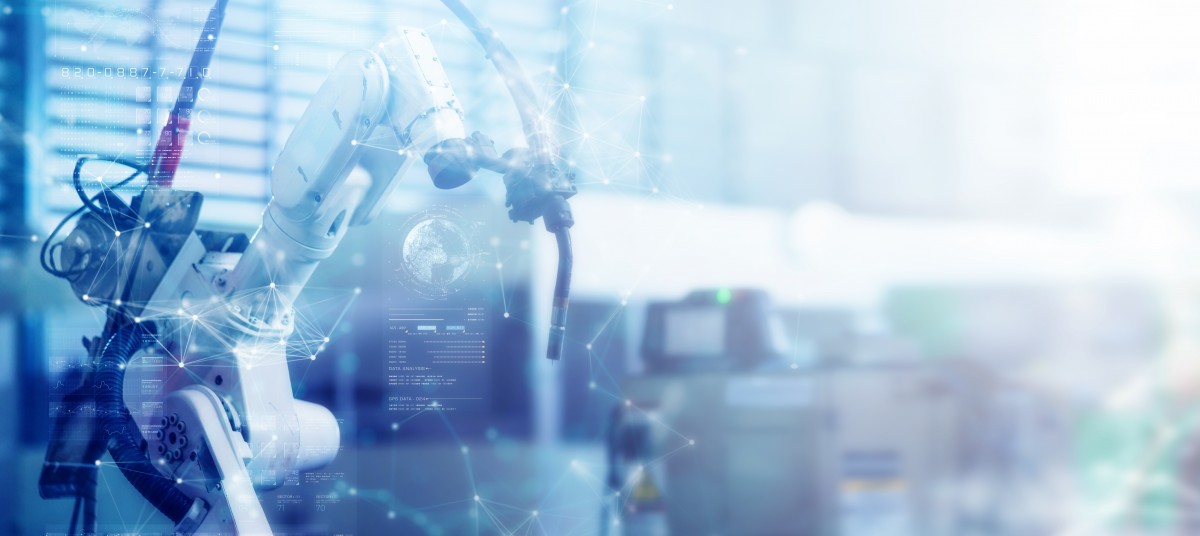How Industrial Robots Will Transform Manufacturing through 2021 & Beyond

Nikhil Kaitwade, Sr. Research Manager, Future Market Insights
Despite recessionary downswings induced by the novel coronavirus pandemic on the global manufacturing sector, analysts are hopeful of a fast paced post-pandemic recovery. According to the National Association of Manufacturers’ (NAM) first quarter outlook for 2021, 87.6% of manufacturers felt either somewhat or highly positive about their prospects, with increases expected in sales, production growth rate and employment.
Manufacturing output was already inclining since October 2020. Estimates suggest that economic activity in the manufacturing sector experienced a sixth consecutive growth month, representing America’s strongest manufacturing growth in the past two years. Such elevated growth is largely ascribed to extensive deployment of automation and robotics in the manufacturing space. Studies conclude that over a third of manufacturers plan to incorporate IoT technology within the manufacturing process in forthcoming years.
As 2021 unfurls, the manufacturing sector intends to transition towards Industry 5.0, a concept which intends to integrate robotics and smart machines workflow alongside human capital, an initiative expected to yield substantial gains. This article explores some major developments and trends regarding industrial robots deployment across key manufacturing industries, including automotive, energy and construction respectively.
Streamlining Internal Logistics in Manufacturing Industries
Autonomous mobile robots (AMRs), forklifts and other automated vehicles are being extensively deployed to improve movement of raw materials and other parts from the warehouse to factory. Adoption of AMRs by Ford Motors’ Valencia factory in Spain is a testimony to this development. Since March 2018, Ford has been deploying Denmark-based Mobile Industrial Robots (MiR), equipped with an automated shelving system with 17 slots to accommodate materials of different sizes and weights.
On a similar plane, 5 MiR1000 robots have improved productivity and safety by eliminating storage problems within the Florisa plant, a company which operates within the textile segment, with production lines focused on dyeing of natural and artificial fibers, based in Brusque, Brazil. This deployment has allowed up to 200 tons to be transported per day, representing a 122% increase from the previously estimates 90 tons while using manned forklifts.
Future prospects appear highly promising. In February 2021, the company announced its plans to leverage its engine production capabilities. Part of the 5G INDUCE pilot initiative unfurled at the Horizon 2020 5G Infrastructure Public Private Partnership by the EU, Ford Motors intends to incorporate Ericsson’s Radio Access Network (RAN) and Core solutions for an extensive 5G network deployment, facilitating innovation and experimentation using cloud computing, augmented reality and other cutting-edge technologies.
The “Go Green” Mantra to Intensify Deployment in the Energy Sector
With the growing scramble to incorporate renewable energy alternatives, industrial robots are experiencing widespread adoption in the energy generation sector. According to the International Renewable Energy Agency (IRENA), global solar power generation for 2020 would reach over 700,000 MW. Also, the Energy Information Administration concludes that solar energy accounts for 1.5% of total electricity generation in the US.
It is in this realm of solar energy wherein robotics application stands to gain the maximum, assisting in performing critical tasks deemed to be challenging or dangerous to human workers. For instance, solar cell dust removal is one primary application area as it involves highly precise cleaning, from edges and corners. These are often at precarious places such as rooftops which could result in injuries or accidents while manual cleaning.
In November 2019, Israeli company Ecoppia was selected by Finnish electric services company Fortum Oyj to deploy its solar project cleaning solutions across India. The companies have jointly launched the E4 fully autonomous robot which uses microfiber brushes to clean the dust from solar panels. It is designed for large rows of solar panels, especially in arid geographies. Robotic cleaning is expected to yield ROIs of nearly 15-20%, and also significantly curtails water usage.
Emphasis on Lean Manufacturing to Usher in Production Efficiency
Lean construction principles have rapidly penetrated the global manufacturing landscape, deployed by a wide consortium of forward-looking companies aiming to maximize profitability and eliminate bothersome stages during the construction process. A major application of this manufacturing process is to eliminate unnecessary wastage, for which robotics are expected to play a pivotal role.
In any typical manufacturing process, there are seven elements of waste: unwanted movement of sundry products; inventory pile-up, excessive personnel movement, frequent interruptions during shift changes, overproduction, over processing and presence of defects. Robots, thus, step in and eliminate these aforementioned problems. Robots do not shut down during shift changes, nor do they disrupt the supply chain.
Lean manufacturing has yielded many positive results in the past. A case in point is that of Falcon Fastening Solutions Inc., a cost-reduction specialist for OEMs which utilize production components in high volume, which reported cost savings exceeding 19% in 2018 amongst manufacturers using its services. More recently, in March 2021, Lavorro Inc. has selected PDF Solutions’ Cimetrix Sapience® platform to support the collection of manufacturing equipment data from the factory floor, used to drive Lavorro’s smart-bot Lucy®.
What Lies Ahead?
The demand for robotics continues to climb across key manufacturing industries. According to the Robotic Industries Association, total market valuation surpassed US$ 1 billion in 2020 across North America. Noteworthy upswings were recorded across the life sciences (69%), food & consumer goods (56%), plastics & rubber (51%) and automotive (39%) industries.
With several industrial domains experiencing connectivity breakthrough, it is but natural to expect increased robot adoption at an accelerating pace. With the recessionary experience of the COVID-19 pandemic still freshly etched, key industries are leaving no stone unturned to ensure that their manufacturing practices remain undisrupted, thus fueling the scope for robotics deployment.
Immense applications are in store across the pharmaceutical and automotive sectors respectively. Robotic technology is already being deployed for vial-filling applications, along with vision sensing technology to verify serialization numbers for compliance while packaging. In the latter, promises abound in electric vehicles manufacturing, as vehicles would likely deploy technologies such as driverless bots and collaborative robots to assist in the manufacturing process. While it may not be the answer to address existing challenges, it will definitely prove instrumental in streamlining the entire production process.
Author Bio: Nikhil Kaitwade, Sr. Research Manager
Nikhil Kaitwade heads the Industrial Automation domain at ESOMAR-certified market research and consulting firm Future Market Insights (FMI). The firm is headquartered in Dubai, with offices in the US, UK, and India. The insights presented in this article are based on a report by FMI on Industrial Robots Market.












